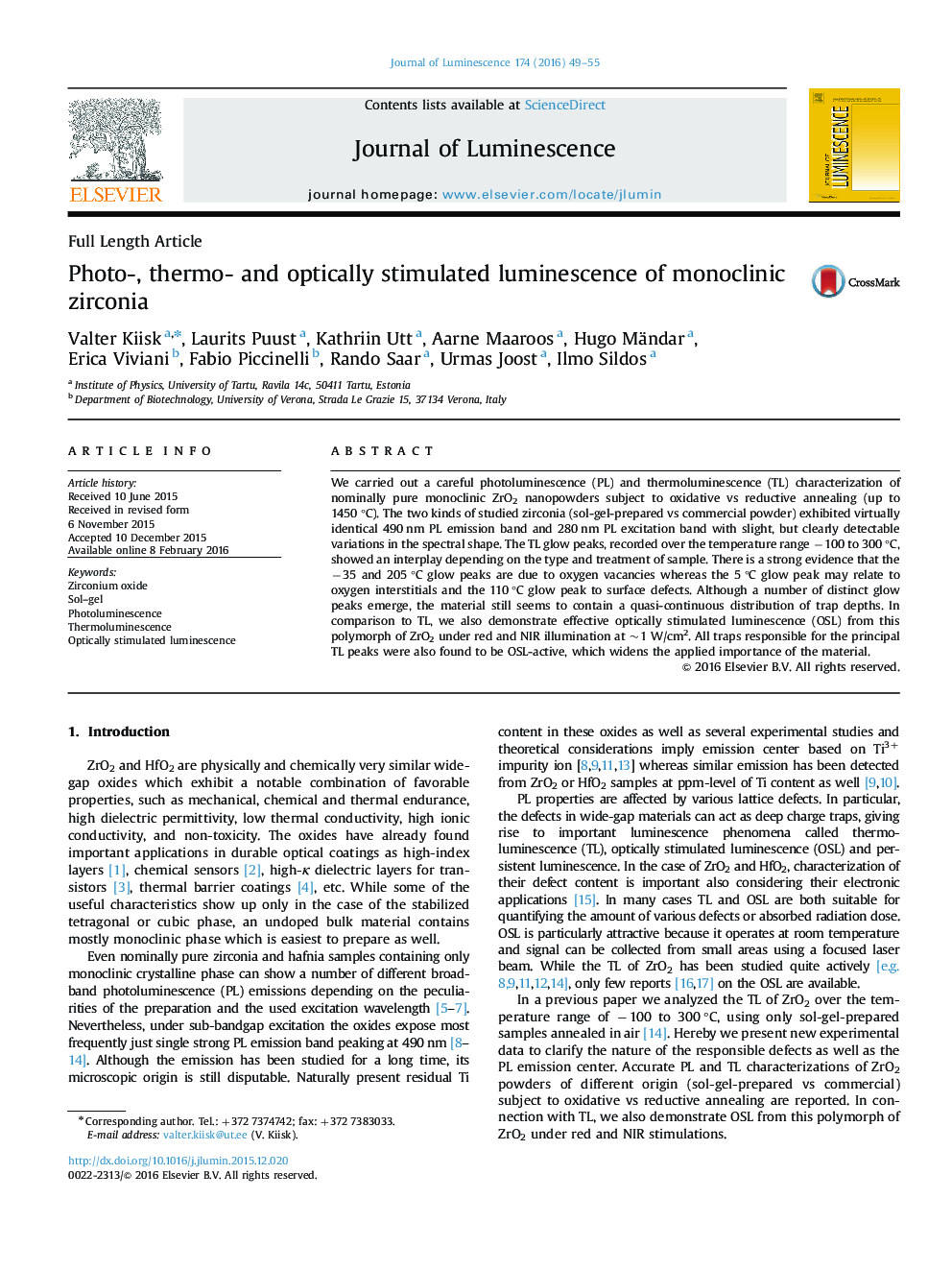| Article ID | Journal | Published Year | Pages | File Type |
|---|---|---|---|---|
| 5398486 | Journal of Luminescence | 2016 | 7 Pages |
Abstract
We carried out a careful photoluminescence (PL) and thermoluminescence (TL) characterization of nominally pure monoclinic ZrO2 nanopowders subject to oxidative vs reductive annealing (up to 1450 °C). The two kinds of studied zirconia (sol-gel-prepared vs commercial powder) exhibited virtually identical 490 nm PL emission band and 280 nm PL excitation band with slight, but clearly detectable variations in the spectral shape. The TL glow peaks, recorded over the temperature range â100 to 300 °C, showed an interplay depending on the type and treatment of sample. There is a strong evidence that the â35 and 205 °C glow peaks are due to oxygen vacancies whereas the 5 °C glow peak may relate to oxygen interstitials and the 110 °C glow peak to surface defects. Although a number of distinct glow peaks emerge, the material still seems to contain a quasi-continuous distribution of trap depths. In comparison to TL, we also demonstrate effective optically stimulated luminescence (OSL) from this polymorph of ZrO2 under red and NIR illumination at ~1 W/cm2. All traps responsible for the principal TL peaks were also found to be OSL-active, which widens the applied importance of the material.
Keywords
Related Topics
Physical Sciences and Engineering
Chemistry
Physical and Theoretical Chemistry
Authors
Valter Kiisk, Laurits Puust, Kathriin Utt, Aarne Maaroos, Hugo Mändar, Erica Viviani, Fabio Piccinelli, Rando Saar, Urmas Joost, Ilmo Sildos,
